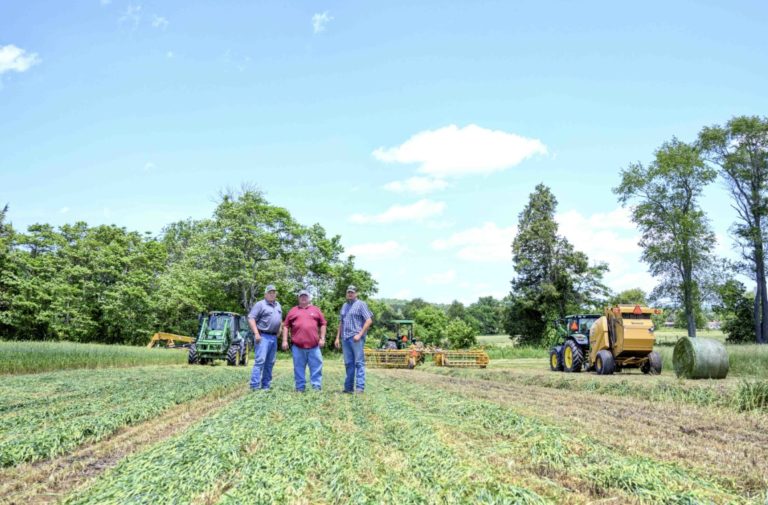
Rancher creates new efficiencies with Vermeer lineup
June 2019
When he’s not driving to the next jobsite for his construction business, Greg Harding is working at his other “day job” on Diamond H Ranch near Poplar Bluff, Missouri.
The right genetics, herd management, feed sources, machinery and marketing opportunities are all components of day-to-day success for Harding, who works alongside his son Josh to manage the operation comprising cow/calf pairs and backgrounding calves. The operation is spread out between Piedmont, Van Buren and Doniphan, all west of Poplar Bluff, in a landscape characterized by native grass pastures, sorghum-sudangrass, wheat and row crops.
Transitioning to silage
Up until a few years ago, Harding primarily grazed cows and calves on around 4,000 acres of native pasture and provided additional feed in baled dry hay and supplemental minerals and protein, usually in the form of ethanol co-product or distillers grains. When a neighboring operator began harvesting green winter wheat and sorghum-sudangrass for silage, Harding saw an opportunity to streamline both what he fed his calves and how he produced and managed it.
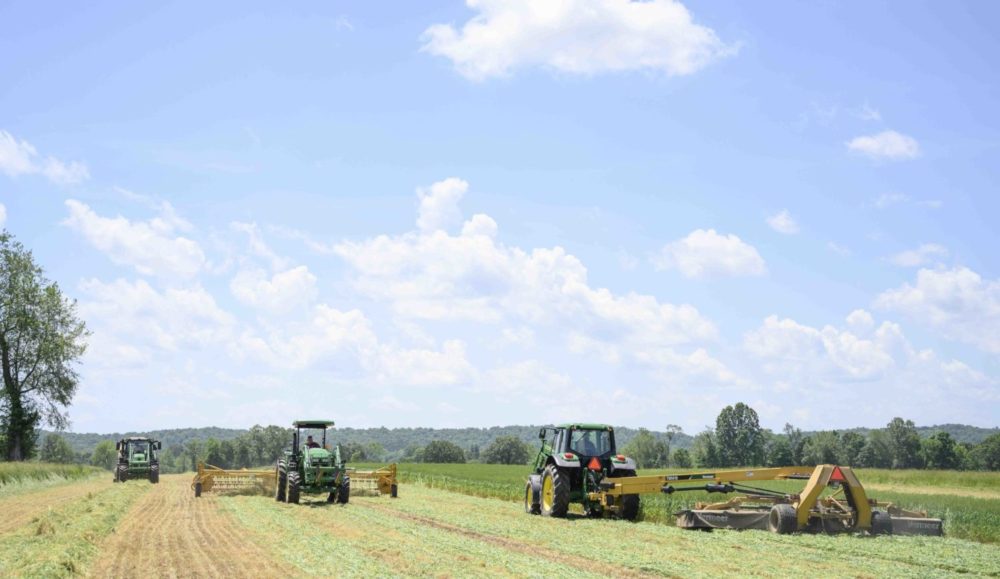
“We switched and started baling silage hay instead of just dry hay. Last year, we put up about 6,000 bales,” said Harding, who markets cows and calves primarily at three main regional livestock auctions. “When we started, we found that we never seemed to have the right equipment in the right place.”
That’s when he began building up his Vermeer forage equipment that now comprises a 604 Pro baler, a 604N baler, an R2300 twin rake, a TM1410 trailed mower, a TE330 tedder and a BW5500 inline bale wrapper. The full lineup has helped Harding make critical changes to how he raises feed, and those adjustments have spawned more operation-wide changes and efficiencies.
“Our haying operations are all spread out, and it’s just not practical to have one storage location for our silage,” he said. “By putting up our native grasses when they’re green, we’re able to capture about twice as much protein in the baled silage and take it straight to the farm where it’s going to be fed, so it’s a one-time transportation operation.”
New marketing opportunities
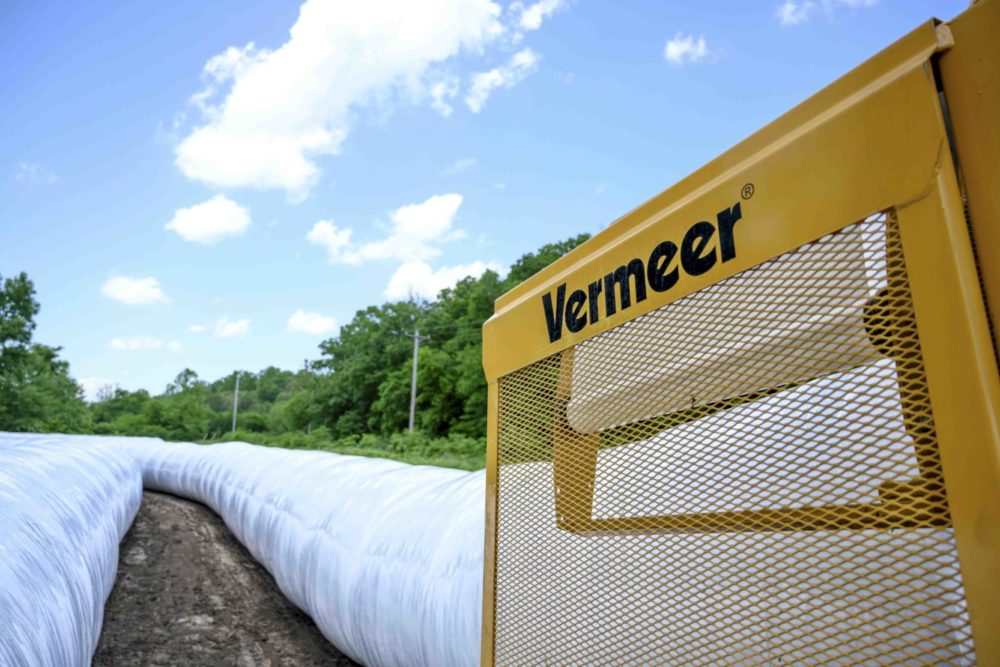
Having a higher-protein feed supply has also provided broader marketing opportunities for Harding. In southern Missouri, he’s been accustomed to calving a percentage of his herd in the fall; but since he started feeding silage, he has ramped up his fall calving because of the increased feed and protein his wheat and sorghum-sudangrass silage provides. That transition has created new marketing opportunities for his calves.
“We’re calving about 2/3 of our herd in the fall now. We found that with silage, sustaining our cows with calves through the winter isn’t so hard on them,” Harding said. “Then in the spring, we have calves that are ready to go to the wean market when prices are better than during the fall calf run, when the market gets flooded and prices are lower. Or, we can hold on to them until February or March and put them on wheat pasture or market them to grass producers to feed them out as yearlings.”
The transition from dry hay to silage was eased by having the right equipment in place, especially a baler that is designed for high-moisture crops. Harding worked with Kevin Henson from Henson Farm Supply in Williamsville, Missouri, to purchase his full lineup of Vermeer forage equipment. During the growing season, Harding moves that equipment around his area so it’s positioned to minimize the travel time between field operations. It’s one of the steps he takes — with the help of his Vermeer equipment, and Henson’s team, who services it — to make his forage harvest operations as efficient as possible.
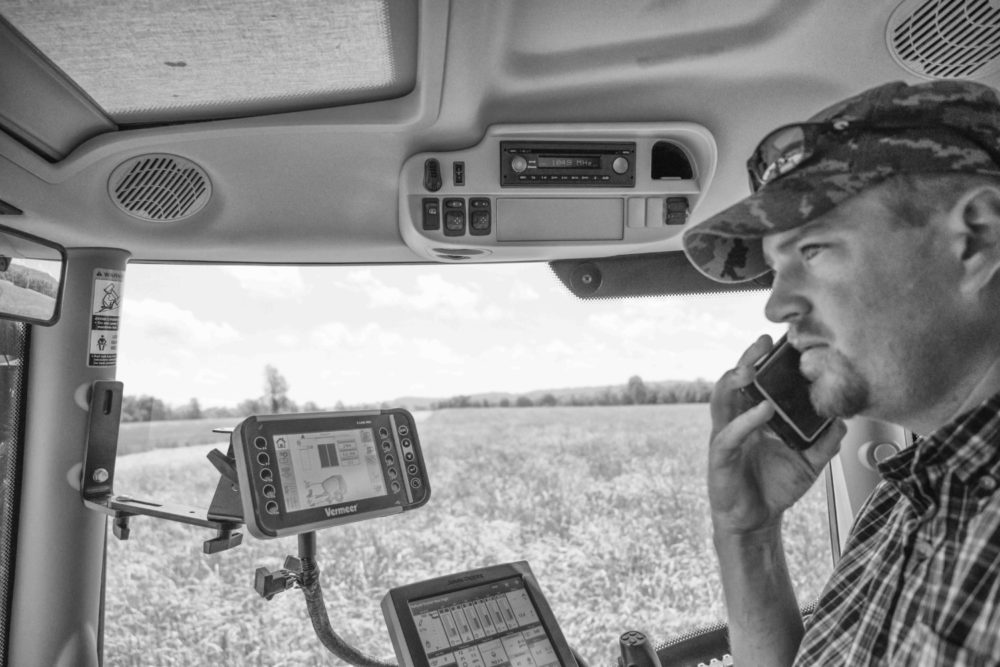
“Our Vermeer rep spent a full day with us and helped us set up our equipment when we bought it. He came to our farm and watched how we were baling and made sure all the equipment was adjusted right. And now, he’s available by phone anytime to help with issues that would otherwise have us shut down,” said Harding, who plans on adding another baler this year. “Our dealer is the main reason we have a full line of Vermeer equipment today.”
Efficient operations
With a full lineup of Vermeer equipment and working with Henson and his team, Harding is able to manage his machinery maintenance and farm labor force more efficiently. Working with Henson to maintain all his Vermeer equipment is more efficient, but there are operational benefits as well. Harding’s son Josh usually manages the cattle side of the family’s operation, and Harding said they often rely on hired labor to help out with some field operations. The straightforward, understandable monitors for Vermeer balers help him maximize his farm workers’ time.
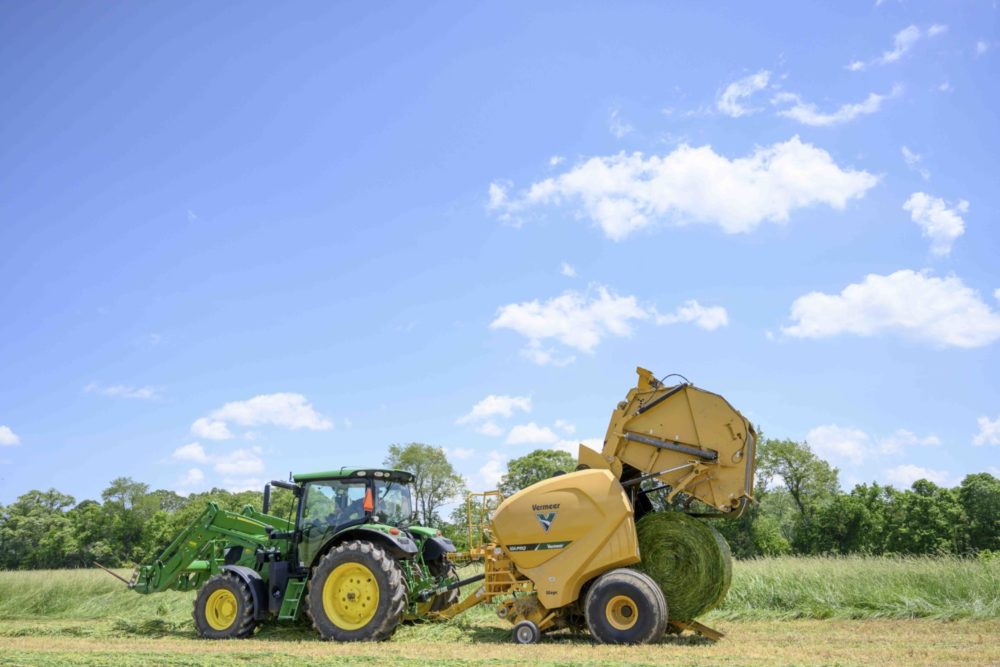
The new monitors for the Vermeer balers are simple to use and the graphics are so high-quality; you can put someone in there who didn’t know a lot about the machine, give him training and soon they can run the machine like an expert,” said Harding, a northwest Iowa native who added he has a “soft spot” for Vermeer because of its similar Iowa roots. “It helps us get more out of our time, and it makes it easier to make uniform bales.”
Looking ahead, Harding said he expects to continue fine-tuning the genetics of his herd, which currently integrates Hereford bulls purchased in Kansas. Crossing with Angus cows and yielding Black Baldy crossbred calves has been a successful heterosis for Harding, mainly because of available feed, seasonal hardiness and temperament. He hopes to return to his roots in the cattle business by backgrounding more calves, some of which he plans to buy from outside his own herd. That diversification will help him pare down his operation’s necessary physical footprint. At the same time, he’ll continue to rely on Vermeer equipment to produce silage to sustain that herd.
“Backgrounding yearlings on grass makes sense for us, and it doesn’t take as much land. I spend a lot of time driving a 100-mile (160.9 km) loop between all our pastures,” Harding said. “When we have equipment that we can rely on like with our Vermeer balers, we know we can be more productive. Anything that does happen, Kevin can usually help over the phone or come out and take care of it so we can stay productive. I wouldn’t trade my Vermeer baler if another manufacturer had a two-for-one sale.”
For more information about Vermeer forage equipment, talk to your local Vermeer dealer or visit Vermeer.com.
Information noted above was gathered from a third party who was advised his/her experience might be featured in marketing materials. This article contains third-party observations, advice or experiences that do not necessarily reflect the opinions of Vermeer Corporation, its affiliates or its dealers. Individual results may vary based on care and operation of machine and crop and field conditions, which may adversely affect performance.
Vermeer Corporation reserves the right to make changes in product engineering, design and specifications; add improvements; or discontinue manufacturing or distribution at any time without notice or obligation. Equipment shown is for illustrative purposes only and may display optional accessories or components specific to their global region. Please contact your local Vermeer dealer for more information on machine specifications.
Vermeer and the Vermeer logo are trademarks of Vermeer Manufacturing Company in the U.S. and/or other countries.
© 2019 Vermeer Corporation. All Rights Reserved.
